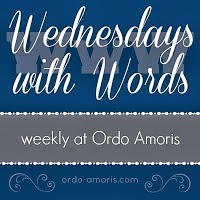I should be reading Desiring the Kingdom for my Classical Mom’s book club, but I have to be honest, I am finding that one really hard to get in to. Instead I keep returning to To Dance With God: Family Ritual and Community Celebration and digesting it in little bits of yummy goodness. These are from chapter one.
“Science changed our views, improved our condition and redirected our hopes to such a degree that every problem and even every mystery became an issue which science would solve. Even while the great scientists themselves, with a growing humility, see that every question answered only reveals more and terribly complex ones, we develop a view that a continually advancing science will provide all the answers.”
Gertrud Mueller Nelson explains that we are “children of the Enlightenment” who have come to prize “the fruit of knowledge as never before.” This is a great explanation why there is such a movement among creationists to create (excuse the pun) a science from a mystery instead of simply allowing the two to exist separately and each fulfill their own purpose.
“(Jung) said that we make a big mistake if we try to rationalize dogmas and if we tamper too much with our ancient traditions. Our intellect, he said, does not understand the secrets of religious mystery.”
I think there is a tendency to get caught up in the modern definition of mystery as something to be solved instead of the theological mystery as a supernatural truth that lies outside of finite intelligence. We are not supposed to understand it all in this life. This is the limitation of intellect in understanding the sublime. So how can we come know that which is unknowable?
“This Church celebrates our cycles and seasons, inviting us the see and engage and feel and touch and be aware and grow and be transformed. Through myth and symbol, the experiences which make up our daily lives are affirmed and made sacred.
This creative and poetic Church helps us to pay full attention to what we might otherwise deem ordinary and commonplace. Rites and symbols use the ordinary and earthy elements of our existence and, by encircling them, ratify, sanctify, complete. The ordinary becomes a container for the divine and safely holds what is uncontainable. The transcendent is disclosed in what is wonderfully familiar: bread, wine, fire, ash, earth, water, oil, tears, seeds, songs, feastings and fastings, pains and joys, bodies and thoughts, regressions and transformations. It draws its action more from what is most human in us than from theology. In its creative function, the Church speaks directly to the heart, a heart which hears symbols, not rational vocabulary.”
And that’s only chapter one! I’m excited to continue.
- How to Transform Math Lessons without Changing your Curriculum with Denise Gaskins - April 26, 2024
- Homeschooling Boys with Durenda Wilson - April 12, 2024
- What About Lab Sciences? with Dr. Moon - March 29, 2024


